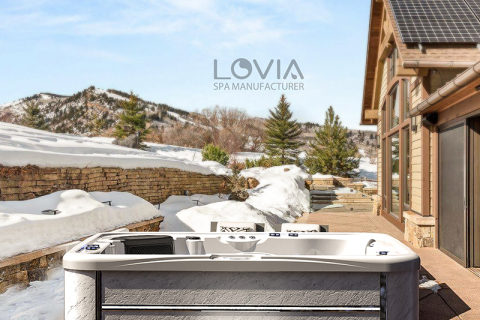
- Home
- >
News
A hot tub's circulation system typically relies on a pump to keep the water moving, and if the water stops flowing, especially in cold temperatures, the still water will quickly freeze. Frozen pipes can cause pipe ruptures or pump damage, or in severe cases, even paralyze the entire system.
Each water pump powers a part of the nozzles. Increasing the number of water pumps can better distribute the pressure, making the water flow stronger and more uniform. For example, a bathtub with multiple water pumps can provide high-pressure water flow to multiple nozzles at the same time, greatly improving the massage effect.
Muscle tension is one of the main causes of back pain, especially tight back muscles caused by long-term poor sitting posture or overwork. Outdoor hot tubs can effectively relieve muscle tension in the back through a combination of warm water and hydromassage.
Maintaining the water in your hot tub is very important, especially when the water temperature is high. Improper use of chemicals in the water (such as chlorine, pH balance adjusters, minerals, etc.) can cause an imbalance in the water quality. Too much chemicals can make the water "slippery", which can cause foaming.
Generally, designers recommend leaving at least 50-60 cm of space between the bathtub and the wall to ensure that users can easily enter and exit the bathtub without restrictions. Such a distance not only facilitates the use of users, but also avoids the risk of bumps or slips caused by narrow space.
Five benefits of soaking in a hot bathtub in winter: 1. Warm the body and promote blood circulation 2. Soothe muscles and relieve joint pain 3. Improve mental health and reduce stress 4. Improve sleep quality 5. Enhance immune function
Most people believe that the more massage jets there are, the better the massage effect of the hot tub will be and the more body areas it can cover. Typically, the number of massage jets in a hot tub ranges from 10 to 50, and some high-end tubs are even equipped with more than 100 jets.
The size, shape, installation location, and safety distance of the bathtub will affect the final required area. Generally speaking, the standard size of a freestanding hot tub is about 5 feet to 7 feet, but the actual size will vary greatly depending on the style and design.
A saltwater system hot tub is a water treatment system that uses salt and electrochemical reactions to generate chlorine. The core of this method is the electrolysis process. By adding a specific concentration of salt to the water of the hot tub, the system will produce chlorine through an electrolyzer to keep the water clean.
When chlorine levels in an outdoor hot tub exceed safe limits, entering the hot tub can cause a number of health problems. Even though chlorine itself is safe in reasonable concentrations, excessive amounts can affect multiple systems in the body.
the installation location of ozone generators in outdoor hot tubs is mainly concentrated near the filtration system or circulation pump, or it can be installed independently through bypass installation. Each installation method has its specific advantages, and users can choose the appropriate installation method based on their bathtub layout and usage needs.
A hot tub cover lifter is an auxiliary device used to simplify the operation of a hot tub cover. Most hot tub covers are heavy and are usually made of heavy foam materials to retain heat and maintain water quality.












